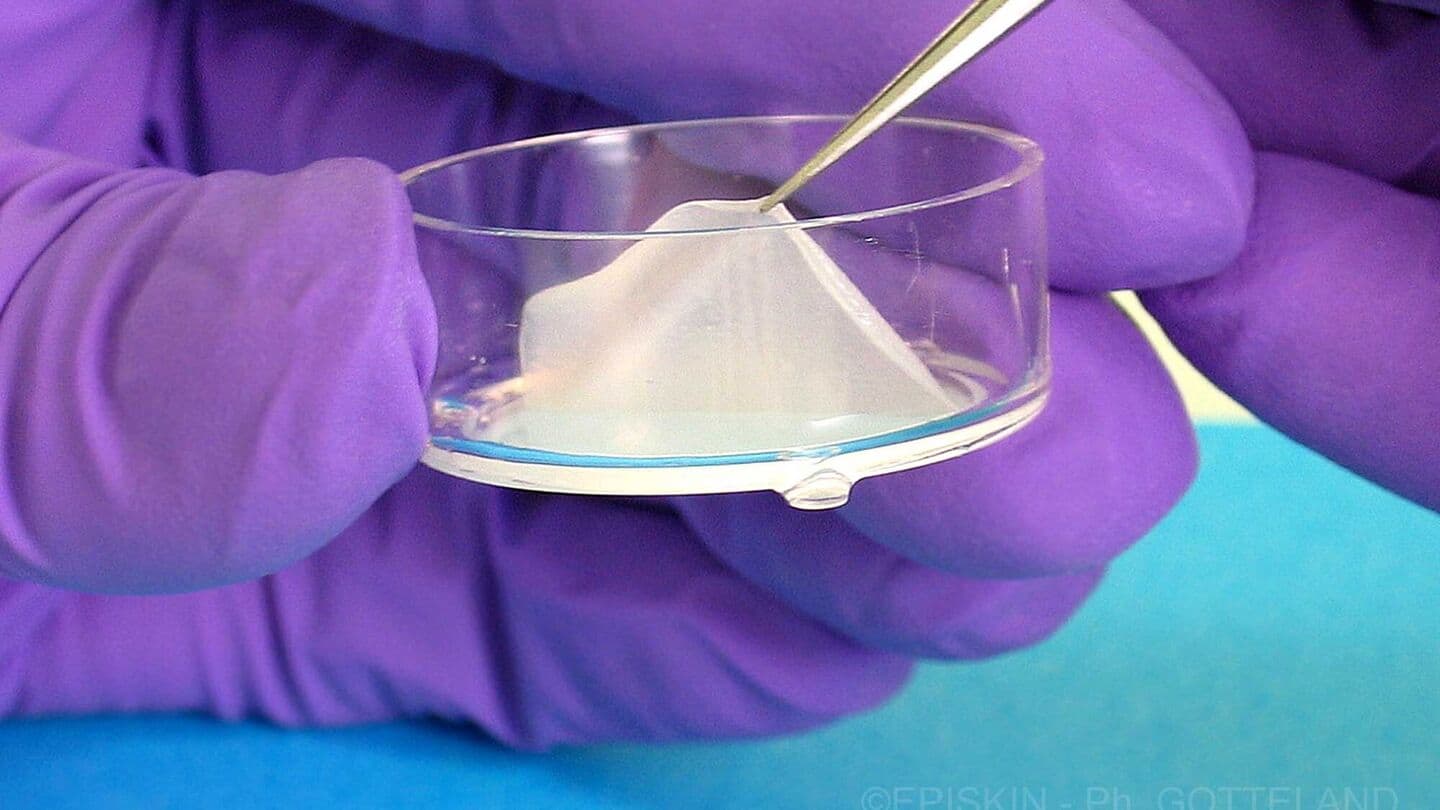
3D-printed 'skin' may end animal testing for cosmetics and drugs
What's the story
Researchers from Graz University of Technology, Austria and Vellore Institute of Technology (VIT) in India are developing a synthetic "skin" by layering 3D-printed hydrogel with living human cells.
The novel technique seeks to mimic human skin's reaction to different substances, possibly putting an end to animal testing in the cosmetics and pharmaceutical industry.
The research was published recently in the open access, peer-reviewed journal STAR Protocols.
Development
The process of creating synthetic skin
The team is working toward making the synthetic skin durable enough for cosmetic testing, hoping to keep it viable for two to three weeks.
Karin Stana Kleinschek from the Institute of Chemistry and Technology of Biobased Systems explained their choice of hydrogel as a base material because of its high water content.
This creates ideal conditions for integrating living human cells, promoting faster growth and multiplication.
Future applications
Synthetic skin: A potential game-changer in testing
The synthetic skin is designed to mimic human skin's reactions to cosmetics and other foreign substances.
This groundbreaking solution could replace animals in testing, not only for cosmetics but also for drug testing and wound healing.
The researchers think their bioengineered solution could replicate human skin's response accurately, making it a perfect alternative to animal testing.
Animal testing
500,000 animals suffer or die annually from cosmetic testing
The use of animals for product testing has been a controversial topic owing to the concern for their welfare.
Many countries have passed laws banning animal testing for cosmetics.
Humane World for Animals, an organization opposed to cosmetic animal testing, estimates that approximately 500,000 animals are harmed or killed worldwide annually.